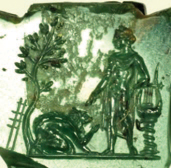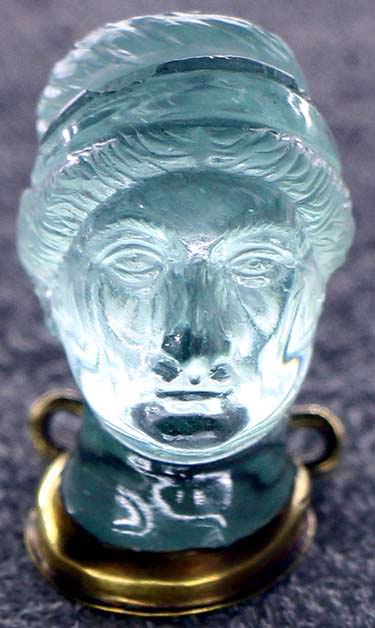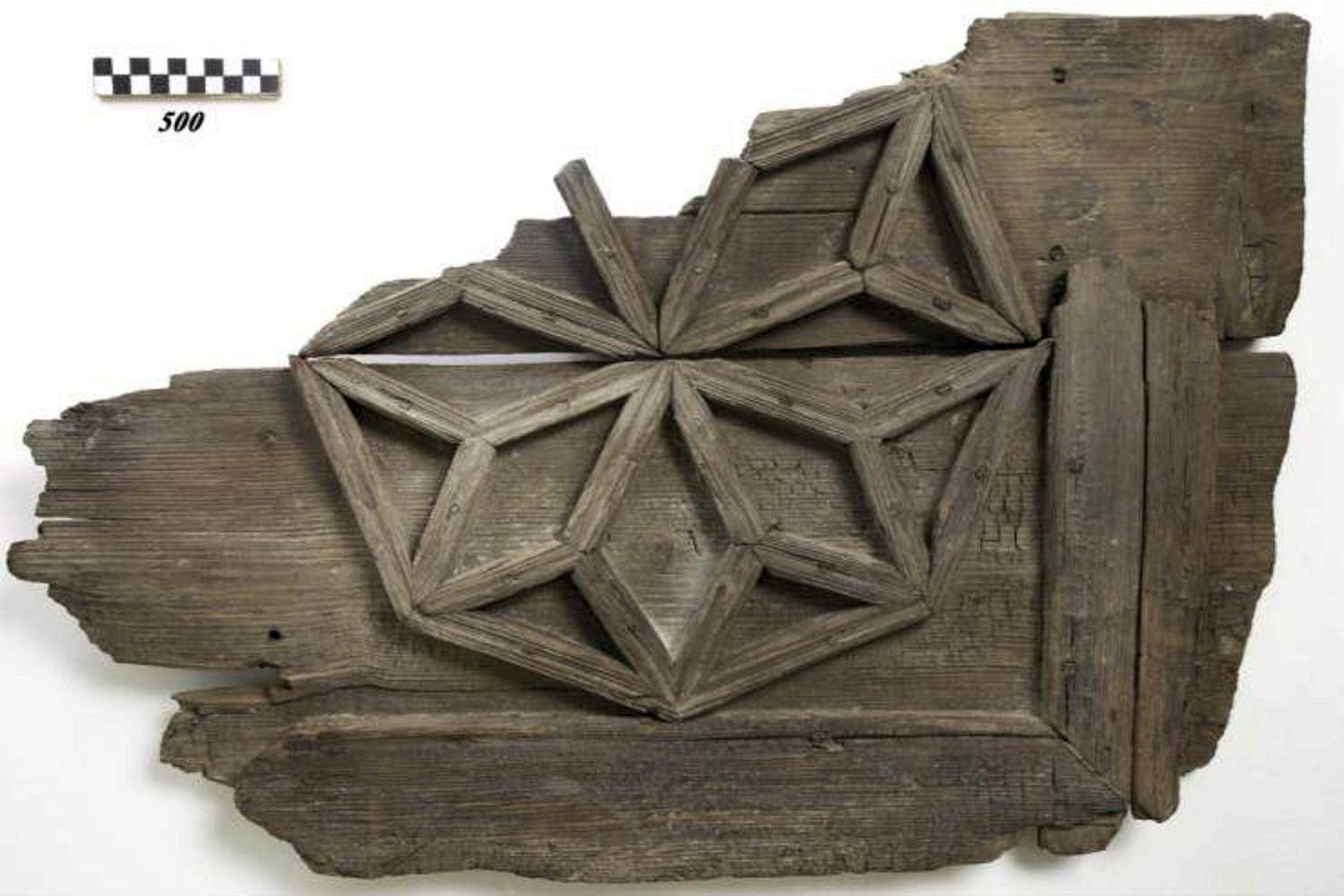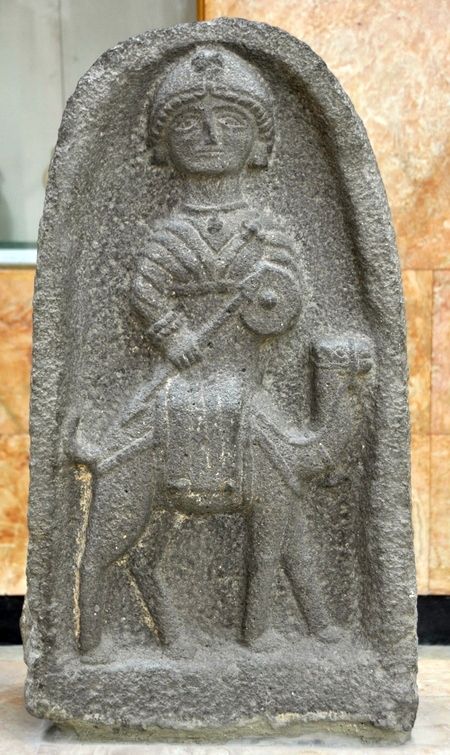Oînops póntos means Wine-dark sea. A word Oînops, combines the colors of amethyst, lapis lazuli, wine and sea. All elements associated with goddess Aphrodite. There is a lot of examples of jewelry associated with Aphrodite with a garnet.


Necklace with pendant of Aphrodite Anadyomene from Dumbarton Oaks collection. Byzantine, early 7th C; gold, lapis lazuli, amethyst and sapphire.
“Standing in a blue shell, Aphrodite Anadyomene wrings seawater from her hair. The pose was well known in antiquity, referring to the goddess’s birth from the sea, of which the deep blue color of the lapis lazuli is a visual metaphor. The harmony of references-pose, shell, deep blue color, and the sea pearls on the short chains-displays the jeweler’s ability to adapt a venerated mythological image to the luxury materials of elite taste during the early Byzantine period.”
picture: http://onditmedievalpasmoyenageux.fr/byzance-islam-lage-de-transition-au-met/


Lapis lazuli and Aphrodite Anadyomene
“My third category is a series of blue gemstones, usually of lapis lazuli or blue glass, that show the famous image of Aphrodite Anadyomene (‘Rising from the Sea’), for instance on two lapis lazuli gemstones in London (Pls 11–12). On the back of the stone we find the magical word arôriphrasis which is typical of these amulets, as we can see from one of the lapis stones in the British Museum (Pl. 12c). Scholars, myself included, sometimes repeat the claim that arôriphrasis transliterates an Egyptian title of the goddess Hathor as ‘The Lady of the Blue Stone’; the epithet exists, but apparently bears no phonetic resemblance to the word arôriphrasis on the gemstone. We do find, however, on one lapis gem of this type the name ‘athor’ inscribed before arôriphrasis, suggesting that the word – whatever it means – was, indeed, an epithet of some sort, and since Hathor and Aphrodite are assimilated in Graeco-Roman Egypt, there is some logic to the appearance of the name and Aphrodite on these blue stones. As in the case of the other types, a rare inscribed prayer tells us much about the perceived power of this kind of amulet: on a greenish lapis gem of another type (with Aphrodite and Ares) we read: ‘Arôriphrasis, give your charm to the bearer’. It would seem, then, that like the name Chnoubis, arôriphrasis identifies a divinity – probably Aphrodite/Hathor – who is thereby invoked to produce charm and beauty in the person who wears the gem. We find this same focus on ‘charm’ or ‘grace’ on two other stones that depict Aphrodite Anadyomene: a circular lapis gem in the Ashmolean Museum, Oxford, which has on its back, instead of the expected epithet, the Greek noun for ‘charm’ (charis); and a recently discovered, but unpublished, blue-glass version with a command along the bevel: ‘Give power (dynamis) and charm (charis) to the one who wears it!’
This crossover between power and charm is illustrated well by the authors of the Kyranides, an encyclopaedic work of Imperial date, but preserving more ancient traditions:
In the euanthes stone, the multi-coloured one, Aphrodite is engraved binding up her hair and the locks on her head and the root of the plant (i.e. arugula) and the tongue of the nightingale are put underneath. Set the stone and wear it and you will be loved
by everyone and will be well known and seem sweet-voiced not only to human beings but also to gods and demons (Kyranides
1.5.27–31).
If someone bears the right eye [i.e. of a bird called the wryneck] under stainless lapis lazuli, in which Aphrodite is engraved, the
bearer will be charming, he will be famous amongst people and he will gain every lawsuit. The left eye has the same effect if borne by women (Kyranides 1.10.39–42).
It is difficult to see any obvious evolution in the case of these blue amulets. Given the focus on erotic charm, classicists and classical archaeologists are apt to see the image of Aphrodite as the most important and original focus for this series but here, too, I suspect that the magical name, the possible connection with Hathor and the type of stone all point to an earlier Egyptian practice, since lapis lazuli was popular in Egypt for many centuries before the Greeks discovered it. It is also interesting to note that the use of this traditional amulet seems to have continued in Egypt down to Byzantine times, as we can see in a gold and lapis lazuli necklace in Dumbarton Oaks said to come from Egypt (Pl. 13). Here Aphrodite is rendered in gold and strikes her familiar pose against a background of lapis lazuli. There are no discernible words or magic symbols on this pendant, but I suspect that I would not be too far off the mark, if I were to suggest that its owner may have known about the charm-giving power of this image and this attractive blue stone.”
Source: „Gems of Heaven” pp 54-55

A roman sapphire cameo, almost certainly from Sri Lanka, depicting Aphrodite feeding an eagle, first century. Image courtesy of the Fitzwillian Museum, Cambridge. source
SOURCES:
– Gems of Heaven publication of British Museum, article Text, Image and Medium by Christopher A. Faraone
– Amethystus: Ancient Properties and Iconographic Selection Luigi Pedroni
– ‘Eye-Like Radiance’: The Depiction of Gemstones in Roman Wall Painting by Ruth Allen
– Peter Gainsford “How to make sense of ancient Greek colours” Colours in Homer #2: the wine-dark sea
– Oînops, wine-dark sea wiki
– Dumbarton Oaks collection













